Leeks: proper planting of seeds and care of seedlings
Recently, growing in garden plots of such a rare culture for Russia as leeks, also known as pearl onions, has become popular. It is believed that growing leeks takes a lot of time and effort. This statement is only true when compared to cultivation. onions: In fact, caring for pearl onions is no more difficult than caring for any vegetable crop.
Content:
- Leek - description and properties
- Planting seeds in open ground
- Planting seeds for seedlings
- Transplanting seedlings into open ground
- Further care: watering, feeding
- Harvesting and storage
Leek - description and properties
Leeks from the Onion family are biennial herbaceous plants, but in garden plots they are most often grown as an annual crop. In the first year of vegetation, the leek develops a strong root system, at least 12 long leaves and a false bulb about 10 cm long, 2 to 8 cm in diameter, which flows into a false stem, reaching a height of 80-90 cm.
The next year, the leek develops a flowering stem with small pinkish flowers that are collected from the inflorescence. In the same period, triangular seeds ripen, similar to the seeds of an ordinary onions... Leek seed material retains germination properties for 3-4 years.
The taste of leeks practically does not differ from onions, only it has less bitterness.
Basically, they eat the white part of the stem, less often young leaves (they quickly coarse and become harsh).
Useful properties and application:
- The composition of pearl onions includes potassium, phosphorus, magnesium, calcium, iron, sulfur, carotene, nicotinic and ascorbic acids, thiamine, protein substances, riboflavin.
- Leek is characterized by a strong diuretic effect, promotes proper metabolism, improves the activity of the glands of the digestive tract, and has a beneficial effect on the liver.
- Leeks are advised to be eaten by people with diseases such as anemia, urolithiasis, obesity, diseases of the digestive system and respiratory tract, atherosclerosis, physical and mental fatigue.
- Doctors advise to limit the consumption of fresh pearl onions for people with diseases of the stomach and intestines and those who have low blood sugar, since leek has the ability to lower sugar levels.
Planting seeds in open ground
It is possible to grow leeks in a seedless way only in the southern regions, since in the middle lane the plant simply does not have time to grow due to the long growing season.
In open ground, leeks are sown in April-May, when the earth warms up well and warm weather sets in.
The fact is that, despite the resistance of leeks to cold weather, the seedlings of the plant will not be able to withstand the frost and will die. Regardless of the method landing it is important for this culture to choose the right soil. Leeks are picky about the quality of the soil: they do not tolerate acidic, heavy or light sandy soils.
The area intended for growing leeks must retain moisture well and be non-acidic, that is, have a neutral acidity level. Leeks will grow well in loam or floodplain soil. Another important condition is good illumination of the site.
Before sowing, leek seeds need to be subjected to a simple processing:
- Place the seeds in a small container.
- Fill with hot water (50 ° C).
- Leave on for 20 minutes.
- Drain the water.
- Place the seeds in a damp cloth bag or gauze.
- Place the seed bag in a dark place.
- The fabric must be damp.
- After a week, take out the seeds, dry them slightly and plant them in the ground.
Leek seeds do not absorb water very well, and this treatment will allow them to accumulate the moisture necessary for germination.
Sowing technology of leek seeds in open ground:
- Before sowing, dig the bed to a depth of 20 cm and add fertilizers - for 1 square meter of soil, 4 kg of compost and 40 g of urea, potassium salt and superphosphate are taken.
- Lightly tamp the soil.
- Make grooves 8 cm deep.
- Sow in grooves the seeds.
- Sprinkle with earth with a layer of 2-3 cm.
- Re-compact the soil (you can slap it with your hand).
After the seedlings grow to a height of 10 cm, they need transplant to a permanent place at a distance of at least 15 cm from each other, observing a gap between the rows of 50 cm.
Planting seeds for seedlings
Leek seeds are sown for seedlings in February-March. Seedling containers can be very different: seed boxes, pots (at least 12 cm in diameter) or greenhouse beds.
The composition of the soil for seedlings can be as follows:
- Peat - one piece
- Garden soil - one part
- Humus - one and a half parts.
Pour the prepared soil into seedling containers with a layer of 8-10 cm, compact and pour a solution of potassium permanganate for disinfection (40-50 ° C).
If for growing seedlings you took separate pots, then one seed is sown in each pot (three or four, and then leave a strong shoot) to a depth of about 1.5 cm.In large containers, seeds are planted with an interval of 3-5 cm in prepared grooves, sprinkle soil.
After planting, the containers with seeds are covered with foil and removed to a warm room with a temperature of at least 25 degrees during the day and 21 degrees at night.
For germination of leek seeds, 100% soil moisture is very important, so do not allow the soil to dry out or dry out. For the normal development of leek seedlings, lighting is required for 12 hours, therefore, if there is insufficient natural light, the seedlings need to organize additional supplementary lighting.
After the sprouts appear (after 15-20 days), the temperature in the room with the seedlings is lowered for a week to 10 ° C at night and 15 ° C in the daytime, and then again increased to 14 ° C at night and 20 ° C in the daytime. It is important to maintain such a temperature regime for transplanting seedlings into the beds. The fact is that too high a temperature contributes to the formation of flower arrows not in the second year of the growing season, but already in the first year.
A month after germination, the seedlings must be thinned so that the gap between them is at least 3-4 cm.
When growing leek seedlings, it is recommended to keep the plants about 10 cm tall by pruning them every 2 weeks. This pruning will ensure good root development and stem thickening.
Seedling care:
- When caring for seedlings, as with germination seeds, it is important to keep the soil moist at all times.
- The stems of young leek seedlings are very fragile so as not to damage them, watering must be done very carefully.
- For the same reason, it is necessary to regularly add soil to the sprouts, then the formation of the bulb will go right.
- During the cultivation of leek seedlings, it is recommended to carry out two dressings fertilizers with an interval of two weeks. For this purpose, ready-made fertilizers sold in stores (for example, Kemira-universal) are suitable or make the complex yourself: dissolve potassium chloride in 10 liters of water - 5 g, urea - 10 g, superphosphate - 20 g.
- 7-10 days before planting in the ground, seedlings need to be hardened and cut watering... First, the seedlings are taken out into the open air in the shade for 2 hours, increasing the hardening time daily. By the time of planting in open ground, the seedlings should be outside for at least a day.
The age of seedlings that are ready to be planted outdoors depends on the type of leek and can vary from 50 to 70 days. Mature seedlings should have at least three true leaves and a developed root system.
Transplanting seedlings into open ground
The beds for growing pearl onions, as well as for other vegetable crops, it is advisable to prepare in the fall: mark, dig up the soil and add to it fertilizers (the same as when planting seeds in open ground). If there was no such opportunity in the fall, we perform all preparatory procedures in the spring.
For soils with a high acidity level, liming should be carried out.
When planning the beds, we follow the rules crop rotation: the predecessors of leek can be potato, cabbage, leguminous plants. Grow onions in the same place more often than once every 3 years.
Before planting on the garden bed, the seedlings are slightly pruned by a third and the top by a quarter. For better plant survival, it is recommended to moisten the roots with a solution of clay and cow dung. Plants are planted in the soil to a depth slightly deeper than they grew in seedling containers. Leek seedlings are planted at a distance of at least 15 cm from each other in rows with an interval of at least 50 cm.This is necessary in order to make it convenient to carry out hilling plants.
Further care: watering, feeding
The agrotechnology of leek cultivation differs from the cultivation of traditional species. Luke... After the seedlings take root well, and the stem reaches a thickness of 5-7 mm, you need to do partial hilling - add earth to the stems. Full hilling is done one and a half to two months after planting seedlings, and repeat two to three times as necessary.
Hilling is an important part of leek care and should not be neglected as it helps whiten the stems.
Before hilling on plant beds, it is recommended to add wood ash. 14-15 days after transplants seedlings in the beds, leeks can be watered with a solution chicken droppings in a ratio of 1:20 or cow dung in a ratio of 1: 8, to which add potash and phosphorus fertilizers.
Caring for pearl onions, in addition to feeding and hilling, includes regular weeding, loosening and watering... Plants need to be watered every 4-5 days, increasing the frequency of watering only on very hot and dry days. Water consumption is 10 liters per square meter of soil. The water temperature should be 15 degrees.
Harvesting and storage
The harvest time depends on the leek variety: some varieties begin to be harvested in August, others intended for storage, - not earlier than October. The best time to harvest leeks is a few days before the onset of frost.
Leeks are gently dug in and, holding by the stem, are pulled out of the ground. The plant for storage is cut to a length of 25 cm, the roots are shortened to 2 cm, placed in containers and sprinkled with wet sand. You cannot completely cut off the roots, because without them, the onion begins to rot.
The most acceptable storage temperature is 1-2 degrees.
Leeks have an amazing unique feature: during storage, they increase the content of ascorbic acid in the stem by one and a half times. No other vegetable has this property.
More information can be found in the video.




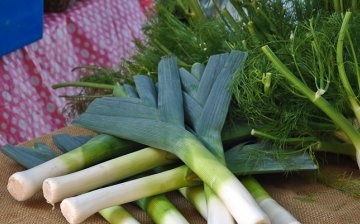
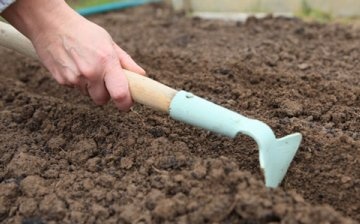
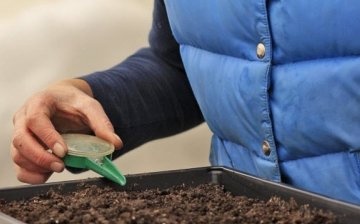
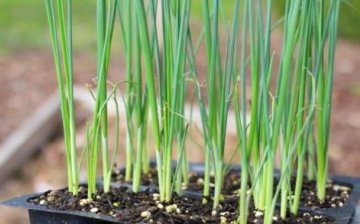
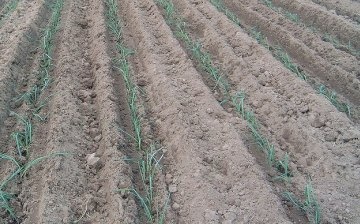

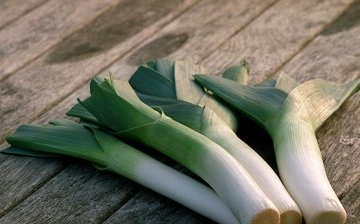








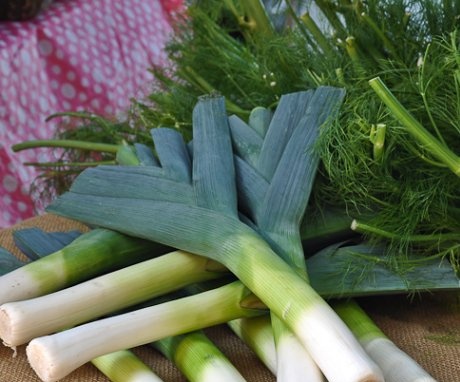

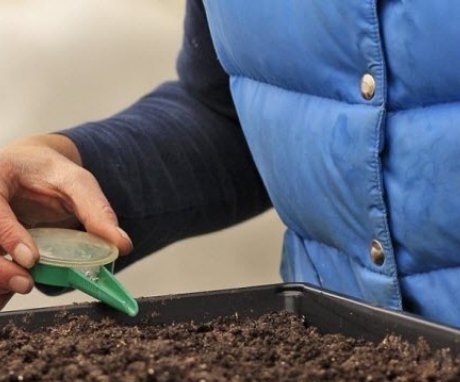
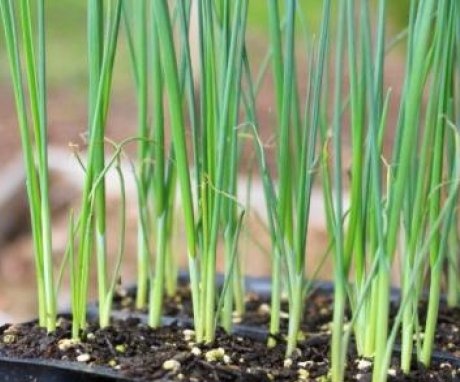
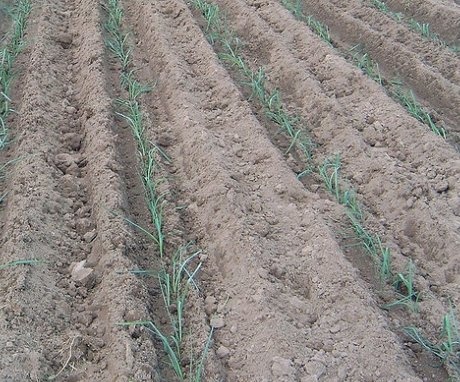

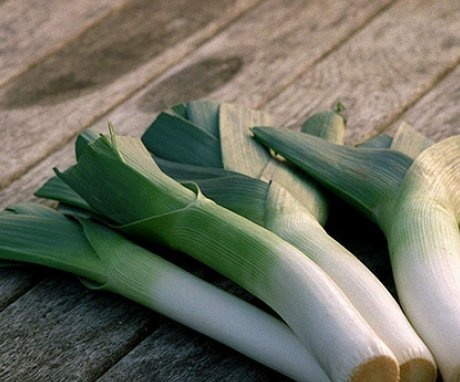
It is not at all necessary to grow leeks until autumn. It can be planted on greenery, and broken through as needed. Pearl onions are very good for making salads.
I plant such onions with seeds in early spring in a greenhouse in order to get small heads for seedlings and plant them in the ground at the right time, and large heads of succulent onions will grow from it and are stored perfectly.